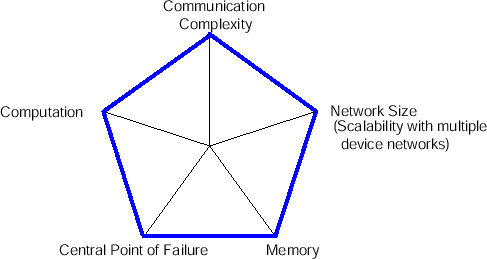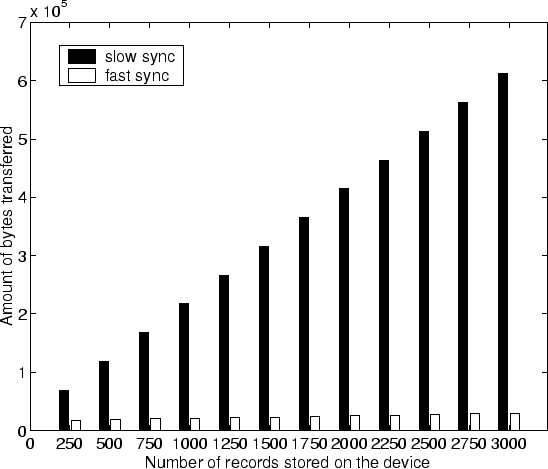



Next: Hotsync
Up: Contemporary Synchronization Technologies
Previous: Conflicts
Contents
Scalability in Mobile Device Networks
The overall end user synchronization experience in
a mobile device is determined by a variety of factors including
latency in synchronization, the amount of battery power used, any
monetary cost involved (such as the cost of the network
connection, air time etc.) and the robustness and reliability of
the synchronization routine. The overall scalability of any
synchronization protocol is determined by how well the protocol
addresses these issues.
Figure 2.2:
Pentagon of
Scalability in Mobile Device Networks
 |
PDAs and other mobile devices are limited in how fast they can
communicate over a network because of the nature of the links that
connect them. Moreover, their limited computational capabilities
are a significant factor in the design of a synchronization
protocol for these devices. They have additional constraints of
limited memories and limited power supplies (see
Figure 1.1). Figure 2.2 shows the
overall issues when mobile device synchronization is considered,
with each of the vertices of the pentagon representing a
scalability issue in mobile device synchronization. The
computation and communication have a direct bearing on the latency
and the battery usage of the device. Mobile device memories are
limited and any protocol which uses a lot of memory will not be
suitable for many of the lower end devices. At the same time, we
wish to develop protocols that allow a large number of devices on
the network to synchronize among themselves and are robust and
preferably peer-to-peer instead of centralized, keeping in line
with the ad-hoc nature of mobile device networks.
Figure 2.3:
Comparison between the communication complexities (in
bytes) of Fastsync and Slowsync.
 |
Subsections




Next: Hotsync
Up: Contemporary Synchronization Technologies
Previous: Conflicts
Contents
Sachin Kumar Agarwal
2002-07-12
